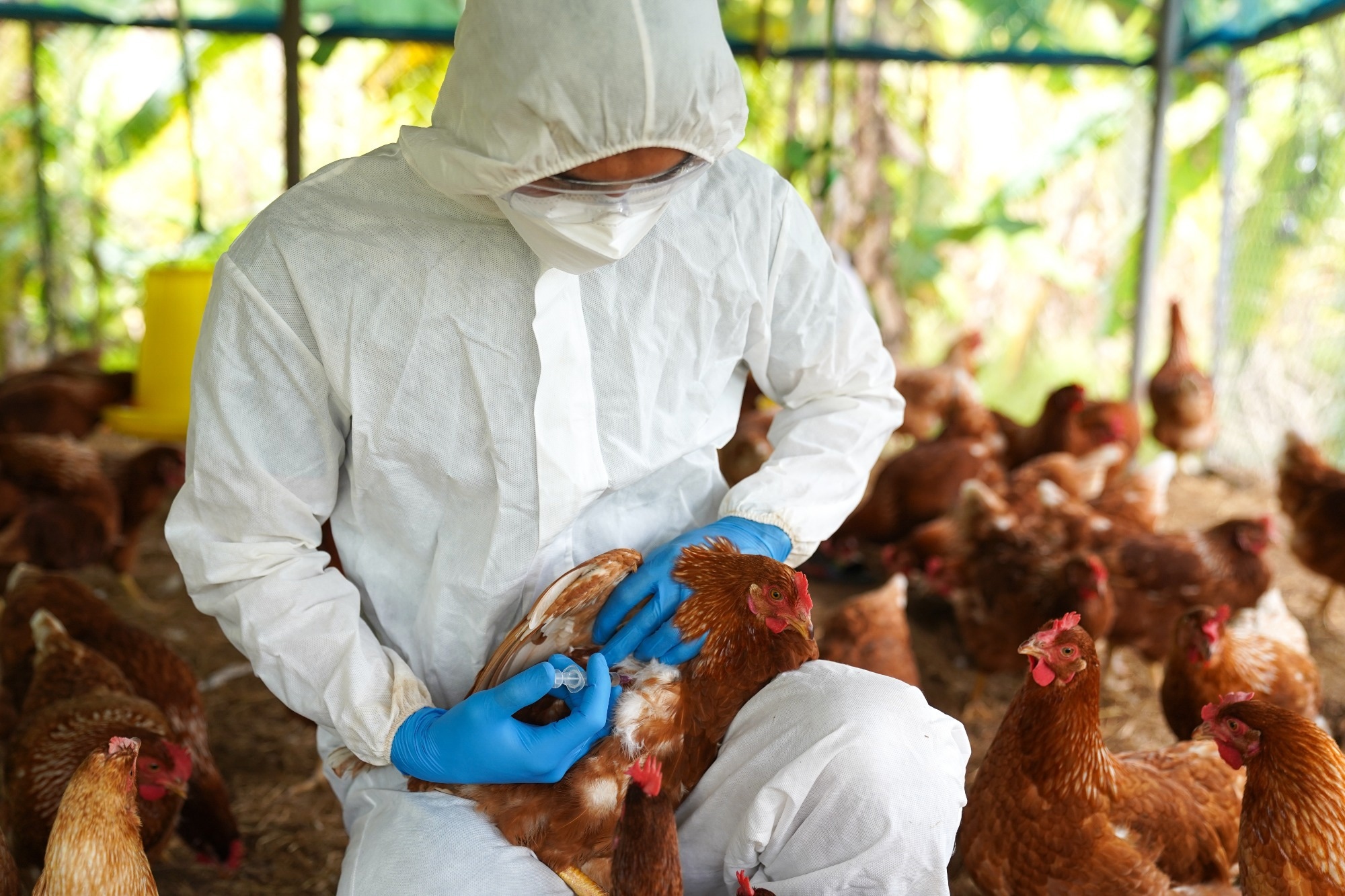In a latest scientific report revealed within the European Meals Security Authority (EFSA) journal, a big staff of researchers from the EFSA and European Centre for Illness Prevention and Management (ECDC) mentioned the intrinsic and extrinsic drivers for a possible pandemic on account of developed avian influenza viruses, and threat mitigation measures which are a part of the One Well being strategy.
 Report: Drivers for a pandemic on account of avian influenza and choices for One Well being mitigation measures. Picture Credit score: Pordee_Aomboon / Shutterstock
Report: Drivers for a pandemic on account of avian influenza and choices for One Well being mitigation measures. Picture Credit score: Pordee_Aomboon / Shutterstock
Present avian influenza virus standing
Wild chook populations within the European Financial Space (EEA) and the European Union (EU) are identified to have a excessive prevalence of avian influenza viruses that trigger vital illness and mortality. Outbreaks have additionally been reported from fur animal farms, the place the avian influenza viruses are thought to have been transmitted from birds to mammals. These infections amongst fur animals are believed to be on account of transmission of the virus from birds to numerous mammalian species and presumably additionally due to transmission between mammalian species.
Though circumstances of transmission of those viruses from birds to people haven’t been broadly reported, the evolution of avian influenza viruses and the dispersal of the virus by means of migratory wild birds might end result within the number of viruses that may infect people.
Provided that people don’t but have strong immune defenses towards avian influenza viruses, the emergence of a virus able to infecting and quickly spreading amongst people poses the danger of a possible pandemic. Inspecting the intrinsic and extrinsic drivers that may facilitate the evolution of avian influenza viruses to contaminate people and to develop efficient mitigation measures is crucial.
Intrinsic and extrinsic drivers of viral evolution
Components corresponding to susceptibility of the host and viral traits, generally known as intrinsic drivers, and extrinsic drivers, corresponding to environmental components, human actions, and local weather, can facilitate the emergence of avian influenza viruses that carry mutations that enable them to contaminate mammals.
Viral traits such because the reassortment propensity can drive the avian influenza virus to adapt to mammalian hosts. The hemagglutinin 5 neuraminidase 1 (H5N1) or avian influenza A virus, which accommodates the two.3.4.4b clade that’s at present circulating, has displayed evolutionary adjustments that would enable it to contaminate mammals and reassort. Moreover, the worldwide prevalence of the H5N1 virus in birds, together with heterogenous poultry livestock, might end result within the accumulation of varied mutations that allow the virus to contaminate mammals, particularly people.
Reassortment also can result in speedy genetic shifts that enable the virus to contaminate and replicate in people and transmit amongst human populations. Coinfection of mammals with seasonal influenza and avian influenza virus might additionally enhance the likelihood of reassortment occasions.
Moreover, fur animals corresponding to foxes and minks are extremely inclined to influenza viruses, and the publicity of those mammals to extremely pathogenic strains of the avian influenza virus by means of contaminated feed might drive the virus’s adaptation to mammals. Outside manufacturing farms and people with proximity to areas wealthy in water birds present extra alternatives for the virus to be launched into farms. Peri-urban and synanthropic wild animals might additionally facilitate the unfold of the virus from wild birds to people and animals.
Habitat destruction, excessive climatic occasions, and climate situations also can influence the demography and ecology of those wild chook populations, performing as extrinsic drivers of the evolution of the avian influenza virus.
Mitigation measures
Danger mitigation measures included within the One Well being strategy instructed surveillance amongst goal animal and human populations together with the technology and sharing of genomic information. Goal animals included wild and captive birds, poultry, inclined home mammals corresponding to fur animals, cats, pigs, and peri-domestic and peri-urban mammals.
The measures additionally comprised growth and entry to sustainable, speedy diagnostic strategies utilizing genomic information to display screen for avian influenza virus in related populations. A further important space for threat mitigation was occupational security in areas the place people work together intently with goal animals. Moreover, reassortment threat could be decreased by vaccinating people with the next likelihood of occupational publicity to avian influenza towards the seasonal influenza virus.
The scientific report additionally mentioned different areas, corresponding to enhancing the veterinary infrastructure, biosecurity, speaking the danger to numerous audiences, and vaccinating animals, which might assist mitigate the danger of the avian influenza virus adapting to people and animals.
Conclusions
In abstract, this report by the EFSA supplied an in depth dialogue of varied intrinsic and extrinsic drivers, corresponding to viral traits, components that enhance the susceptibility of animals, and environmental components that would speed up the variation of avian influenza viruses to mammalian hosts. The scientists additionally expanded on varied mitigation measures, at particular person and neighborhood ranges, that could possibly be adopted to cut back the danger of adaptation and transmission of the avian influenza virus amongst animal and human populations.
Journal reference:
- European Meals Security Authority (EFSA), European Centre for Illness Prevention and Management (ECDC), C., Adlhoch, C., Alm, E., Enkirch, T., Lamb, F., … Broglia, A. (2024). Drivers for a pandemic on account of avian influenza and choices for One Well being mitigation measures. EFSA Journal, 22(4), e8735. DOI: 10.2903/j.efsa.2024.8735, https://efsa.onlinelibrary.wiley.com/doi/full/10.2903/j.efsa.2024.8735
